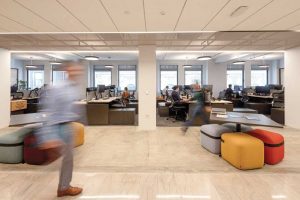
By Brad Pridham, PhD, P.Eng., Michael Wesolowsky, PhD, P.Eng., Rabih Alkhatib, PhD, P.Eng., and Sami Rahman, M.A.Sc., P.Eng.
Over the past five years, the commercial real estate industry has seen a surge in the acquisition of properties to be renovated as laboratory space for the health sciences sector. This has involved renovations of buildings across North America to create tenant space suitable for housing state-of-the-art research tools and programs.
A key challenge for architects and engineers has been the development of strategies for vibration control, where it is necessary to achieve a base level of performance suitable for life sciences. Achieving success often involves analyzing the vibration performance of the base structural system, followed by evaluating various options to ensure alignment with performance objectives.
Vibration sources of concern
Floor vibration problems in reuse scenarios are typically caused by:
- Occupant activity, such as walking, running, dancing, and exercising, which results in dynamic forces transmitted to the floor during each footfall.
- Building services, such as pumps, fans, and generators with vibrations during operation that transmit to the structure, resulting in structure-borne noise and tactile levels of vibration.
- Environmental sources, such as roadway and railway traffic and vibration activity in nearby buildings that transmit through the ground into the building.
While occupant activity is arguably the most problematic source of vibration on supported floors, it is not uncommon during building reuse for spaces to be sited close to building equipment or exterior roadways, resulting in increased exposure to vibrations.




